In order for the body to maintain optimum well-being, the mind must be involved. Self-help movement exercises send a powerful message from the mind to the body: You are taking the time and making the effort to help yourself.
Asian movement exercises have been around for thousands of years. When practiced regularly, they bring both predictable and unexpected benefits. I encourage clients to find a simple practice that appeals to them and fits easily into their lifestyle.
There are sections below on:
Note that the links below will open in a second browser window.
Yoga
There are many different styles of Yoga and many classes available in this area. If you’re new to yoga, it’s a good idea to experience different styles and different teachers until you find what you like.
I prefer a meditative style of yoga rather than yoga as an athletic performance, and I’ve finally found a class I really like. The teacher is Tina Madison. She is a Stanford graduate and a trained physical therapist who is genuinely fascinated by the body. Her teaching style is a gentle form of hatha yoga, and I especially recommend her for students who have injuries or chronic conditions.
Classes are at Ananda in Palo Alto (El Camino at Oxford), Tuesdays and Thursday, 12:15 to 1:30. Here’s her email address in case her schedule has changed. Classes are very affordable. If you purchase a ticket for 10 classes, the cost is $7 per class. The cost for a single drop-in class is $10.
I’ve listed some additional books on yoga in the Osteoporosis section of Wellness Topics:
[back to top]
|
|
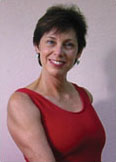 |
|
California Yoga Center
Elise Browning Miller teaches at the California Yoga Center in the San Antonio shopping center in Mountain View. If you’re looking for Iyengar yoga, she’s excellent. She offers classes for different levels of experience, and they are all challenging (in a good way).
Elise began her study of yoga many years ago to alleviate the pain caused by her scoliosis. She offers classes for students with back problems (look for the letter ‘B’ on the class schedule). Classes are $17 for drop-in, or $14 a class if you pay in advance for an 8-week sequence.
Her website has an article from Yoga Journal on scoliosis which includes some recommended poses. She is available for private sessions, during which she will assess your condition and prescribe a set of daily practices.
[back to top]
|
|
|
|
Acu-Yoga, Self Help Techniques to Relieve Tension
by Michael Reed Gach, with Carolyn Marco
Acu-yoga uses yoga poses to stimulate acupressure points and stretch energy channels. Like yoga, it works extensively with the breath. It has all the advantages of yoga, plus the additional benefits of addressing energy imbalances and specific ailments. After discussing the basic principles of acu-yoga, this book illustrates hundreds of poses. The illustrations are good and you can learn this practice from the book.
[back to top]
|
|
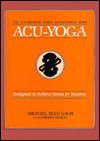 |
|
|
|
Tai Chi
Similarly, we are fortunate to have many excellent Tai Chi teachers in this area. I have studied with Martin and Emily Lee, who teach a Yang style of Tai Chi. You can find their introductory class listed in the DeAnza/Foothill College catalog. Once you complete the initial class, you can go on to take additional classes, which are not listed in the Foothill catalog. The cost for the introductory class is $75 for a series of seven weekly sessions. The class meets at the Oak School in Los Altos (near Fremont and Truman Avenues).
[back to top]
|
|
Ride the Tiger to the Mountain: Tai Chi for Health
by Martin Lee
One of the things I liked about learning Tai Chi from Master Lee is that he’s written a book that describes each movement in precise detail (his background is in particle physics). This makes it very easy to refresh your memory between classes and, for me, it made learning the sequence of the forms much easier. This is the introductory book that describes the first 12 of the 64 forms of the sequence.
[back to top]
|
|
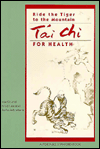 |
|
|
|
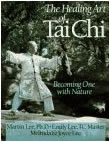 |
|
The healing art of Tai Chi: becoming one with nature
by Martin Lee
Master Lee’s second book includes all 64 forms of the sequence. The descriptions of each form are not as detailed as in the earlier book (two pages each, instead of four to six pages), but the information is more than enough to supplement what you learn in class. A videotape is also available. You can purchase the video at classes, and there are ordering instructions on the Lee’s website (see below).
[back to top]
|
|
|
|
 |
|
Joe Deisher — Tai Chi and Qigong
Another Tai Chi and Qigong instructor in the area is Joe Deisher. I haven’t been to his classes yet, but he comes highly recommended. He teaches in Palo Alto, Campbell, and Saratoga.
[back to top]
|
|
|
|
The Root of Chinese Qigong
by Dr. Yang Jwing-Ming
Another excellent book by Dr. Yang (see the Tui Na Resource section for more on Dr. Yang.) This book is not instruction on how to do Qigong, but a companion book for the serious student. The section on Keys to Qigong Training includes chapters on regulating the body, breath, emotional mind, essence, qi, and spirit. There’s an interesting chapter at the end called One Hundred and One questions, where Dr. Yang raises points that are unexplained and deserve further thought and research. I’ve never met him, but you can sense the spirit of this teacher through his books, and I have a very high regard for him.
[back to top]
|
|
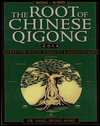 |
|
|
|
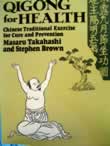 |
|
Qigong for Health, Chinese Traditional Exercise for Cure and Prevention
by Masaru Takahashi and Stephen Brown
I acquired this book shortly after it came out in 1986, and learned a great deal from it, including breathing techniques and Inner Regulation Qigong. It’s still a good introduction to the subject, especially if you don’t have a teacher, or if you want to investigate Qigong before deciding to look for a teacher.
[back to top]
|
|
|
|
Knocking at the Gate of Life, and other healing exercises from China, Official manual of the People’s Republic of China
translated by Edward C. Chang
This is another book I’ve used for close to twenty years. It describes healing exercises — not just Tai Chi and Qigong, but exercise therapy for specific conditions, including chronic conditions such as arthritis, asthma, insomnia, indigestion. The index is good, so you can pick it up whenever you need relief from hemorrhoids, for example, and find helpful exercises. This edition, published in 2000, is considerably updated, both visually and in content, from the 1985 version I’ve been using.
[back to top]
|
|
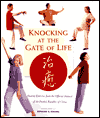 |
|
|
|
 |
|
Chi Kung, Cultivating Personal Energy
by James MacRitchie
This is an excellent introductory text for anyone investigating Qigong. It does contain a few practices, but it emphasizes that you really need to learn Qigong from a qualified teacher. The contents include history, the different forms of Qigong, the benefits, and what it feels like to practice.
[back to top]
|
|
|
|
Qigong for Beginners, Eight Easy Movements for Vibrant Health
by Stanley D. Wilson
This entire book is devoted to the Qigong practice called Eight Pieces of Brocade, also known as Eight Silken Movements, or Pal Dan Gum. This is a simple sequence of movements, appropriate for almost anyone. Unlike more advanced Qigong practices, Pal Dan Gum can be learned from a book, and this is a good book to learn from.
The complete set movements helps release blockages along all twelve energy meridians. It only takes five to ten minutes to do the complete set, so it’s easy to make this a daily habit. The same movements are also described in Iona Teeguarden’s book, The Joy of Feeling, Bodymind Acupressure Jin Shin Do, which is where I originally learned this practice.
[back to top]
|
|
 |
|
|
|
Do In
Another useful self-help practice from Japan is Do In. It’s a sequence of moves that tap, squeeze, and press the body’s energy channels. Shiatsu practitioners frequently teach this to their clients. I haven’t yet found a good book on Do In in English.
[back to top]
|
|
Makko-Ho
Another set of stretching movements commonly used in connection with Shiatsu is Makko-Ho. Like Pal Dan Gum or Eight Silken Movements (described in Qigong for Beginners), Makko-Ho activates all the meridians.
[back to top]
|
|
Meridian Tracing and Self-Massage
I learned a wonderful Tui Na self-massage sequence from my teacher, Brian O’Dea, which includes tracing the meridians. Tracing the Stomach meridian, for example, is very helpful for acid reflux. For Qigong self-message, see Dr. Yang’s tape, described in the Tui Na section.
[back to top]
|
|
 |
|
Qi, The Journal of Traditional Health and Fitness
This publication is aimed primarily at Qigong enthusiasts. It includes a useful interactive acupressure model for locating points (under the Traditional Chinese Medicine tab). The publisher has a great catalog of books and supplies that they’ll send at no charge. You can order it online.
[back to top]
|
|
|
|
 |
|
Yo Sei Do
A website by Yuichi Kawada. Check out the illustrated Eight Meridians Stretching Exercises. These are not the same as the Makko-Ho meridian stretches.
[back to top]
|
|
|
|
|
|
 |
 |
 |






























